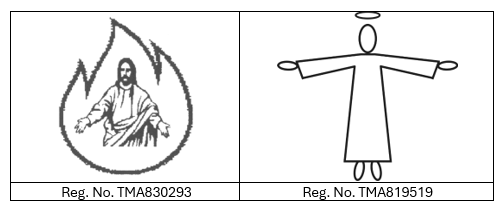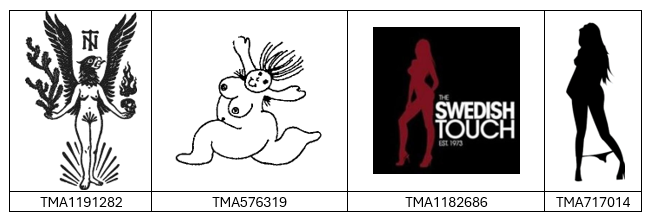“Scandalous, obscene or immoral” trademarks are not only unregistrable in Canada, but they are also unlawful to adopt in connection with a business “as a trademark or otherwise.” While similar prohibitions have been deemed unconstitutional in the United States, this broad ban remains in force in Canada, where its constitutional status is untested.
For those looking to appropriate the inappropriate, this article answers: “What does the Canadian Trademarks Office consider offensive?”
Offensive at law
Court cases on offensive trademarks are few and far between.
However, the one rule that clearly presents itself in the jurisprudence is that offensiveness is not measured by what the majority of Canadians think. If a segment of the population, including those “who still may be regarded as old fashioned” would be offended, the mark is not lawful (La Marquise Footwear, Inc, [1946] 2 All ER 497).
The trademark MISS NUDE UNIVERSE was determined not to be offensive. The court found the word “nude” was “a perfectly acceptable adjective” on its own and in the context of the mark as a whole (Miss Universe, Inc v Bohna, 1992 CanLII 14761 (FCTD)).
Offensive in practice
Most often, it is the Canadian Trademarks Office that decides if a mark is offensive, and will approve or refuse an application on that basis. While its past decisions can help applicants and their counsel to determine where the Registrar may draw the line, they are not binding precedents, and the Registrar will assess each application on its own merits.
Canada’s Trademarks Examination Manual articulates how examiners may determine whether an applied-for trademark is “scandalous, obscene or immoral”:
- A scandalous word or design is one which is offensive to the public or individual sense of propriety or morality, or is a slur on nationality and is generally regarded as offensive. It is generally defined as causing general outrage or indignation.
- A word is obscene if marked by violations of accepted language inhibitions or regarded as taboo in polite usage. This word “obscene” is generally defined as something that is offensive or disgusting by accepted standards of morality or decency; or offensive to the senses.
- A word or design is immoral when it is in conflict with generally or traditionally held moral principles, and is generally defined as not conforming to accepted standard of morality.
The Manual also provides three non-exhaustive examples of offensive marks:
- Racial slurs.
This prohibition is consistently enforced.
A design mark with the words NAZI LONDON (App. No. 1391041) was refused in 2008.
Note that not all demonyms are considered objectionable. The mark NEWFIE SEALERS was registered in 2014 by a painting and sealing business in St. John’s, Newfoundland (and also without any concern as to its geographic descriptiveness) (Reg. No. TMA888504).
- Religious subject matter, particularly the word HALLELUJAH.
This prohibition is inconsistently enforced.
Marks containing irreverent religious references are routinely refused.
Respectful portrayals of religious subject matter may be allowed. See, for example, the word mark WALKING AND WORKING WITH JESUS (Reg. No. TMA1305449) and design marks said to depict Jesus:

However, the Trademarks Office may not approve a mark if “it is not the message of the trademark itself that it considered offensive, it is the use of the trademark in connection with a business, as a trademark or otherwise, that has led to the … objection” (see App. No. 1776853 for SWEET JESUS).
- Sexual innuendo and subject matter, for example, a “representation of a topless dancer” (App. No. 0409882).
The Trademark Office’s practice with respect to sexually suggestive material is likewise inconsistent.
Trademarks that have been registered or deemed registrable, and may therefore be considered legally inoffensive, include HOOKER LIPS cosmetics (Reg. No. TMA1140084), DIRTY GRANNY alcohol (Reg. No. TMA916775), SUCK TRUCK graffiti removal (Reg. No. TMA779476), and SUCK ME OFF THE HALF SHELL seafood (App. No. 2015888). DR. PENIS for cosmetic surgery did not receive an objection, although it was considered clearly descriptive (App. No. 1890070).
On the other hand, DIRTY NIPPLES for grease nipple covers did receive an objection, notwithstanding that the mark refers to the dictionary word for the machine parts used to inject grease into a machine (App. No. 1490900).
While the trademark FAT BASTARD was successfully registered for burritos and wine (Reg. Nos. TMA1116162, TMA579078), similarly themed marks LUCKY BASTARD (App. No. 1712339) and DIRTY BASTARD clothing (App. No. 1535722) were not approved.
The word NAKED is the subject of many registered marks (see, for example, Reg. Nos. TMA1304556, TMA1140577), although the mark THE NAKED TEA PARTY was recently refused – not because it was considered offensive, but because it was curiously thought to clearly describe the applicant’s live entertainment services (App. No. 2248932).
Design marks also carry risks. However, even somewhat explicit artistic renderings (Reg. Nos. TMA1191282, TMA576319) and silhouettes (Reg. Nos. TMA1182686, TMA717014) have been found unobjectionable.

Non-traditional marks may also attract objections, particularly as the Trademarks Act prohibits offensive words or devices. In February 2025, a 3-D mark application for a phallic cake was abandoned following such an objection (App. No. 2218961).
Constitutional questions remain
As noted above, the ban on offensive trademarks covers both their registrability and their use. This prohibition pre-dates Canada’s Charter of Rights and Freedoms and has not been challenged since “freedom of expression” was codified as a constitutional freedom in 1982.
Courts are likely to treat the two issues differently.
The ban on registering an offensive trademark may survive scrutiny. While the government cannot repress expression without justification, it is not obliged to offer a “platform” to those wishing to spread a message (Toronto (City) v Ontario (AG), 2021 SCC 34). If the exclusive rights afforded by a registration are considered a privilege, and not a right, the courts may allow Parliament wide latitude to decide what types of trademarks are, and are not, deserving of the benefits of registration. Even if so, there is a caveat. In deciding what trademarks are registrable, Parliament cannot set boundaries in a discriminatory way without justification. As “viewpoint discrimination” – i.e., the government’s giving benefits only to those opinions with which it agreed – was the very reason the U.S. Supreme Court found the ban on registering offensive marks to be unconstitutional, expect litigants to raise similar concerns in Canada if a challenge arises.
In contrast, the prohibition on using an offensive trademark may be more difficult for the government to uphold, as the Supreme Court has already ruled that commercial advertising is a form of expression protected by the Charter (Irwin Toy Ltd v Quebec (AG), [1989] 1 SCR 927), and that offensive or unpopular content is no less deserving of constitutional protection than mainstream opinions (R. v Keegstra, [1990] 3 SCR 697).
Conclusion
A provocative trademark has obvious marketing value, which makes it worth protecting. However, businesses seeking to register or even use such marks should know the risks of doing so. Unless and until they are found unconstitutional, certain prohibitions in the Trademarks Act make it difficult to obtain exclusive rights in such marks, and make it theoretically unlawful to even use them.
The preceding is intended as a timely update on Canadian intellectual property and technology law. The content is informational only and does not constitute legal or professional advice. To obtain such advice, please communicate directly with our offices.
Related Publications & Articles
-
Strategic considerations: Canadian post-grant patent administrative procedures
The Canadian patent system provides multiple post-grant administrative procedures that allow both patentees and third parties to revisit the scope or validity of a patent without going to court.Read More -
Moral rights and contractual gaps: the case of a hidden mural
The decision in Bachand c Mural underscores the importance of considering moral rights when commissioning public art.Read More -
In(dustry) focus: consumer goods – a complete IP framework for entering the Canadian market
In this first article of the series, we explore consumer goods. Given the upcoming holiday season, we will use a fictional toy – “Andy the Ampersand” – to convey our insights. Whether you’re new to th...Read More
